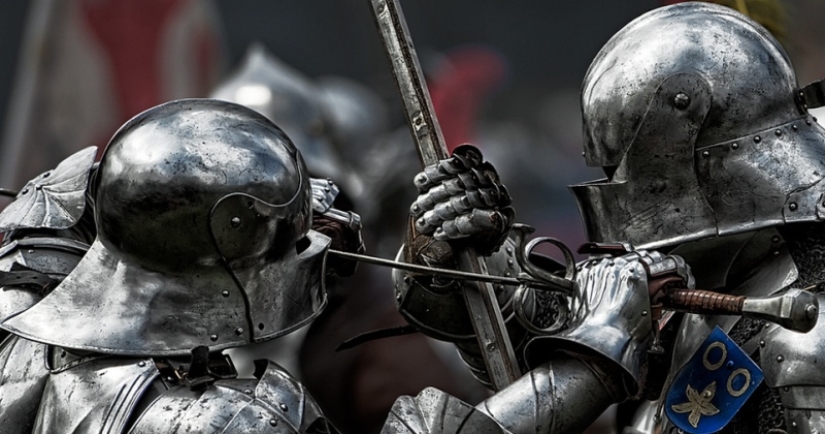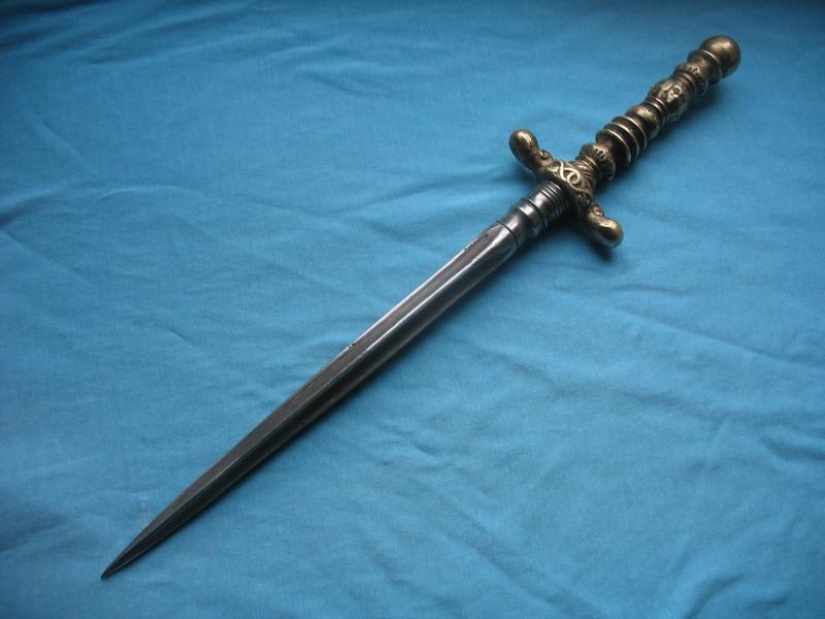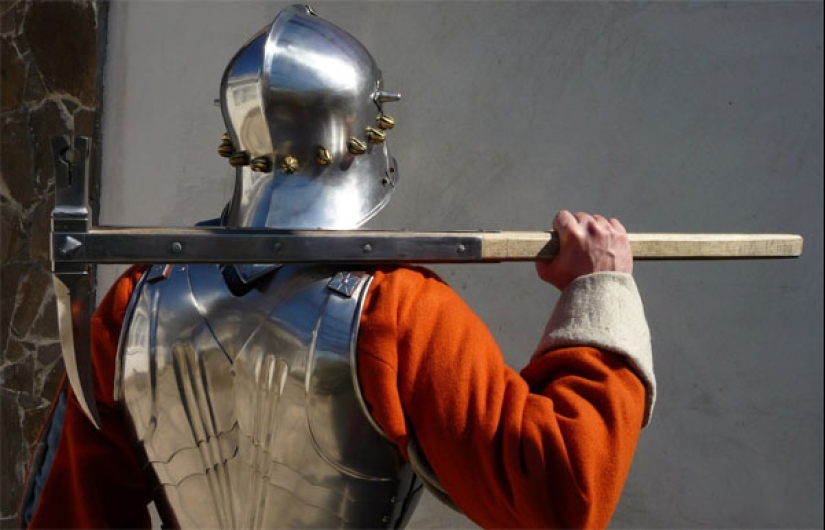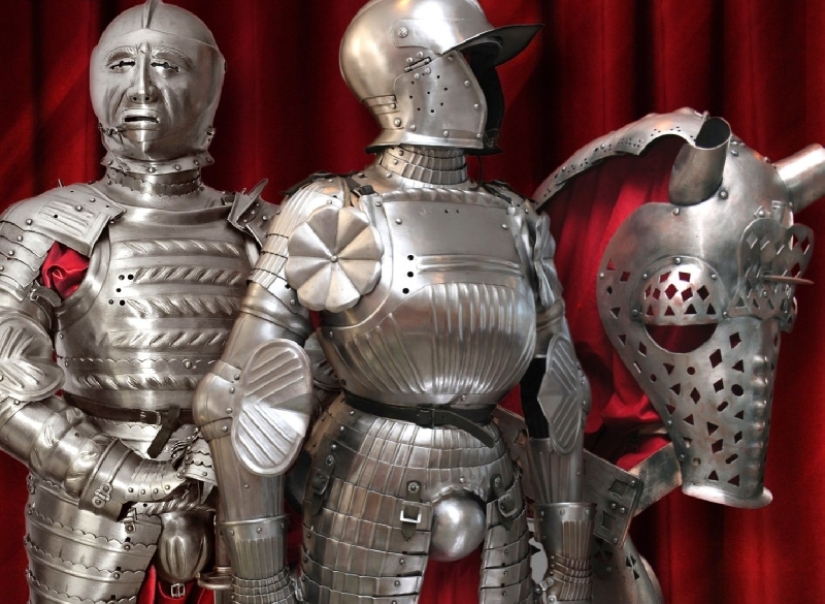The illusion of invulnerability: how effective was the knight's armor
Categories: History
By Pictolic https://pictolic.com/article/the-illusion-of-invulnerability-how-effective-was-the-knights-armor.htmlMedieval knights, clad from head to toe in armor, seem invulnerable. But in reality, tens of kilograms of high-grade steel only reduced the likelihood of getting a fatal wound. A warrior, even dressed in damask armor created by the most skilled craftsmen, could get injured, including fatal. The level of protection was significantly reduced due to the design flaws of the armor or due to the efforts of the creators of cold weapons, who also did not waste time in vain.

The weak points of any armor are the seams and joints in the places where the joints are located, as well as the viewing and breathing slits in the visor of the helmet. To defeat a knight in such places, a special "dagger of mercy" — misericordia-was used.
Misericordia
This thin and long dagger got its name because it was used to finish off the enemy who was thrown to the ground, saving him from the shame of defeat and a joyless life with injuries.

The blades of some misericords were tetrahedral and strongly thickened to the hilt. With such a dagger, a person with a good physical shape could break through the armor in any place.
Misericordia with a four-sided blade
This weapon had one drawback — to use it, you had to get close to the enemy, who also did not yawn. At the beginning of the 16th century, the "dagger of mercy" had a close relative-the stiletto. This weapon was invented by Florentine gunsmiths and it was perfectly suitable for defeating an opponent dressed in chain mail or scaly armor. The thin blade could pass through the cell of the armor.

Classic stiletto
In the Renaissance and even later, the stiletto was the favorite weapon of assassins. These weapons could be of different lengths, shapes, and designs. Stilettos were made folding and even hidden in canes and staffs. Like the misericordia, the stiletto could hit a knight through the joint, in the creases, or in the area of the armpit and groin.

An archer or crossbowman who masterfully wielded his weapon could hit an unprotected place with an arrow. It was because of such a precise hit in the gap between the breastplate and helmet that the King of England, Richard the Lionheart, died. Although, most likely, the hit in the king's neck was accidental — the shot was fired from a crossbow from a distance, from the fortress wall.
Folding stiletto
But to kill or maim an armored warrior, it was not necessary to sneak up and aim at the gap between the steel plates. Slashing and crushing blows, delivered with great force with swords, axes and maces, could also cause serious damage to the owner of the armor.

Warhammer-klevets, could, with skillful use, break through any armor
Fractures and bruises in the days of the knights were very common combat injuries. After knocking a knight off his horse, it was almost possible to beat him with anything, even with a stone, since it was very difficult for a man in steel armor to stand on his feet without help.

To reduce the damage from crushing blows to the body, the breastplates were made convex. This created a buffer zone, sometimes helping to save the ribs and spine from fractures. But this trick could not save you from a full-gallop spear attack, blows with a swing of a pecker, a two-handed axe or a hammer.
A dandy in such expensive armor was a tasty morsel in terms of ransom
But no matter what they said, the armor could save the life of its owner, even if it was not too strong. The dead knight was not a very valuable acquisition — for his body you could get a little, but a living noble hostage could be exchanged not only for money and valuables, but also for prisoners. Therefore, they tried to take a warrior in armor alive, and the more expensive the armor looked, the more delicately they captured him.
This is what the "man catcher" looked like»
For a relatively gentle capture of the knight, a special weapon was intended — the manketcher ("catcher of people"). This grip, with a clever device, allowed you to grab a horse or a foot soldier in armor by the neck and safely hold them at a distance and even escort them.
Keywords: Defense | Weapons | Medieval | Steel | Helmet
Post News ArticleRecent articles

When we use some things from day to day, we stop noticing how they change over time. The same applies to people themselves: we see ...

It turns out that in some countries of Europe and Asia there is simply no central heating, but the locals do not freeze there at ...
Related articles

This woman combines disparate XVII century things — she was a nun, a rebel and a witch. It is shot from a bow, treat people ...

Leprosy for thousands of years has existed with the man, causing a chilling fear his unpredictability and ruthlessness. Only in the ...

The gang of "Fantomas" kept Rostov-on-Don in fear for five long years. This gang has 14 armed robberies and several human lives on ...

American photographer Davide Sorrenti is considered by many to be a classic of "heroin chic" and a champion of ...